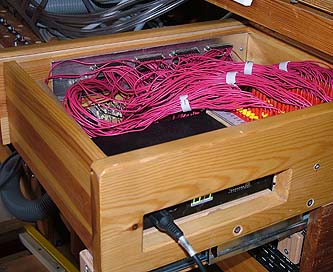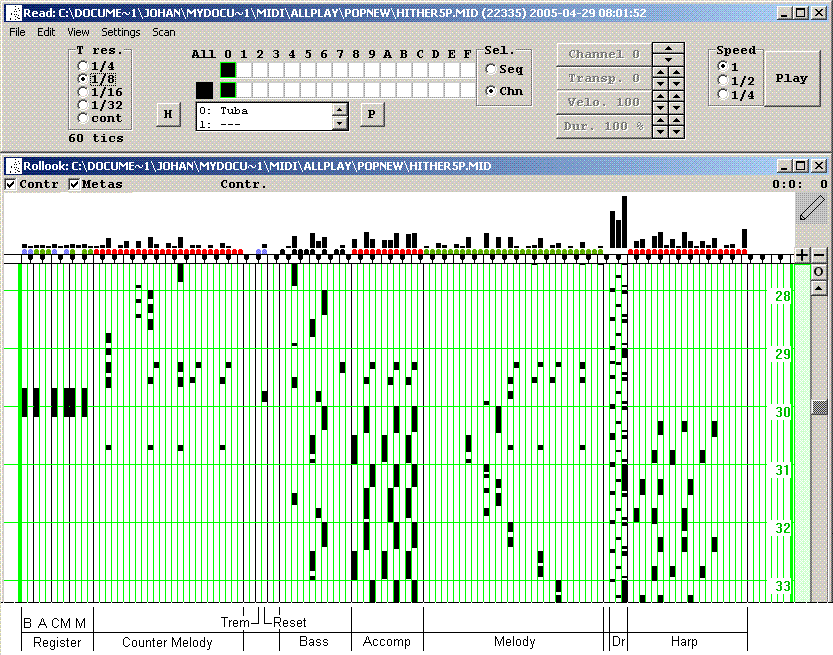The 128 decoder outputs are drawn to jacks on a patchboard panel. The note valve control cables from the windchests are plugged into this panel. This is where the correspondence is defined for which particular note will be played by each MIDI note.

| The MIDI signals to the
organ are received by an Octet UM-1 decoder, the central black box in
this photo.
This device interprets the codes and has an output in form of 128
lines, one for each of the notes within one 'MIDI channel'. When a
'note on' command is received, then the line corresponding to that
particular note is activated and will pull a magnet valve somewhere in
the organ. The line stays active until eventually a 'note off' command
for the same note is received. The 128 decoder outputs are drawn to jacks on a patchboard panel. The note valve control cables from the windchests are plugged into this panel. This is where the correspondence is defined for which particular note will be played by each MIDI note. |
 |
